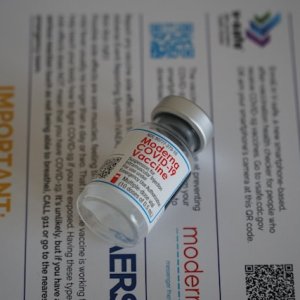
Mexico a Leading Player in Global Wellness Economy
The global wellness industry grew from a US$3.7 trillion market in 2015 to US$4.2 trillion in 2017, according to the Global Institute of Wellness. Today, the industry represents 5.3 percent of global economic output and Mexico increasingly is playing a leading role in the sector.
Greater awareness of personal health, appearance and well-being are fueling the industry’s growth, along with technological advances that improve access to information. According to an Arizona State University report, the variety of wellness apps and mobile health monitors are empowering individuals to monitor and analyze key indicators like heart rate and activity and stress levels. “Today, many people use the internet to look for more information about their health and find innovative treatments,” says Sandrine Dupriez, Director General of Laboratorios Expanscience Mexico.
Globally, Mexico is tapping into the wellness trend to become the No. 1 destination for wellness tourism in Latin America and No. 11 overall, according to the Global Institute of Wellness. Skin and visual care are among the leading segments fueling growth in the country. “The cosmetics industry develops indispensable goods. Both men and women use these treatments to enhance their physical appearance and to consequently feel better in terms of self-care and self-esteem,” says Alejandro López, Director General of IM Natural.
The Mexican market is expected to continue growing above the world average over the next few years. According to CANIPEC, approximately 20 percent of the US$10 billion personal care market belongs to skin care products. The value of the Mexican visual market totals US$35 million, according to Coopervision, and it has the potential to growth to US$200 million in the next five years.
SKIN CARE
The global skin care market is valued at US$141.3 billion and it is expected to hit an estimated value of US$180.3 billion by 2024, according to Statista. The driving factors behind this growth, according to Euromonitor International, is a growing consciousness regarding health, appearance and well-being.
As Mexico continues to grow its skin care market, there remains a great deal of opportunity. Dupriez highlights the country’s environmental and climatic conditions that make it necessary to use sunscreen, but the use of these products remains low. “Due to the increase in pollution, the skin requires more dedicated care. In Mexico, sunscreen is not yet as widely used as it should be,” says Dupriez. Mexico needs to transform its skin-culture since sunscreen and other products should not only be used when people are directly exposed to the sun but as a daily protection. “In Colombia, these products are used three times more than in Mexico. This is an area where there is still much to do. People should start using sunscreen every day, not just at the beach,” she says.
The market for men is another area of opportunity as social conventions are broken about skin and makeup. IM Natural is among the company’s targeting this demographic. “We launched a line for men four months ago. The products that have been most successful in this market are moisturizing and shaving creams, and products for beards and mustaches,” says López. The company is undergoing a knowledge development phase but in the near future it will be launching more products, he adds.
Euromonitor International expects the cosmetics industry in Mexico to enjoy annual growth of 11 percent through 2019. Among the most valuable brands in the industry are Johnson’s, which is the flagship brand for Johnson & Johnson, Gillette, L’Oreal, Pantene and Nivea. However, global brands recognize that the Mexican market has its peculiarities and requires tailor-made products. “We see interesting trends among Mexican women, who focus on internal and external beauty,” says Magdalena Ferreira-Lamas, Vice President and General Manager for the Group of North Latin American Markets (NoLA) of Avon. The company launched a new brand of makeup called MARK, with new colors, such as brown, violet and blue. “These are designed to offer a choice for women of all walks of life and ages. The brand adapts well to the taste of Mexican woman, giving a wide variety of options for everyday use,” says Ferreira-Lamas.
A rising concern regarding skin problems is another factor fueling the skin care products industry. The National Institute of Cancer (INCan) reported skin cancer as the second-most frequent type of cancer in Mexico. Each year, 16,000 new cases of skin cancer are diagnosed in the country with the WHO arguing that an absence of a preventative culture is a contributing factor. The use of products that protect against UV exposure could help and these products are also stronger than ever. “Years ago, people would wear sunscreen with SPF protection 12. Today, the minimum is SPF 30, while SPF 50 has become the most-used product,” says Dupriez. “UV protection levels have gone up to offer better protection.”
VISUAL HEALTH
WHO’s Universal Eye Health: A global action plan 2014-2019 report estimates there are 285 million visually impaired people worldwide, of which 39 million are blind, while 80 percent of all causes of visual impairment are preventable or curable. The international organization has emphasized that efficient and available eye care facilities are essential to efficiently control blindness, including visual impairment. Other international organizations like the World Economic Forum have stated that vision problems should be considered an easily solvable public health issue that could result in an almost immediate change in a country’s productivity.
Awareness is key, says Alfonso Ventura, Director General of The Association to Prevent Blindness in Mexico (APEC). “About eight out of 10 people could have their eyesight problems resolved if they went to see an ophthalmologist,” he says. Collaboration between different visual health players could have an almost immediate impact on society, adds Patrick Devlyn, Director General of Grupo Devlyn. “If the government, companies and the ophthalmological and optical sectors work together, there can be a favorable and almost immediate impact on society.”
Devlyn adds that the solution is often a simple one. He says that visual healthcare as “a public health issue becomes solvable through a pair of well-graduated and affordable glasses, creating a significant impact on various segments of society.” Glasses in comparison to treating other diseases are affordable and easy to provide. “The cost of frame or contact lenses is minimal when compared to the productivity and engagement benefits that people can get from them,” says Devlyn.
Companies and nongovernmental institutions also are working together to reduce eye impairments that cannot be resolved by glasses and which involve surgery, such as cataracts. “There is still a lot to do in terms of visual health in Mexico,” says Ventura. “One condition closely linked to blindness is diabetes, which is a growing problem in our population. While cataracts are the primary cause of reversible blindness in this country,” he says.
















